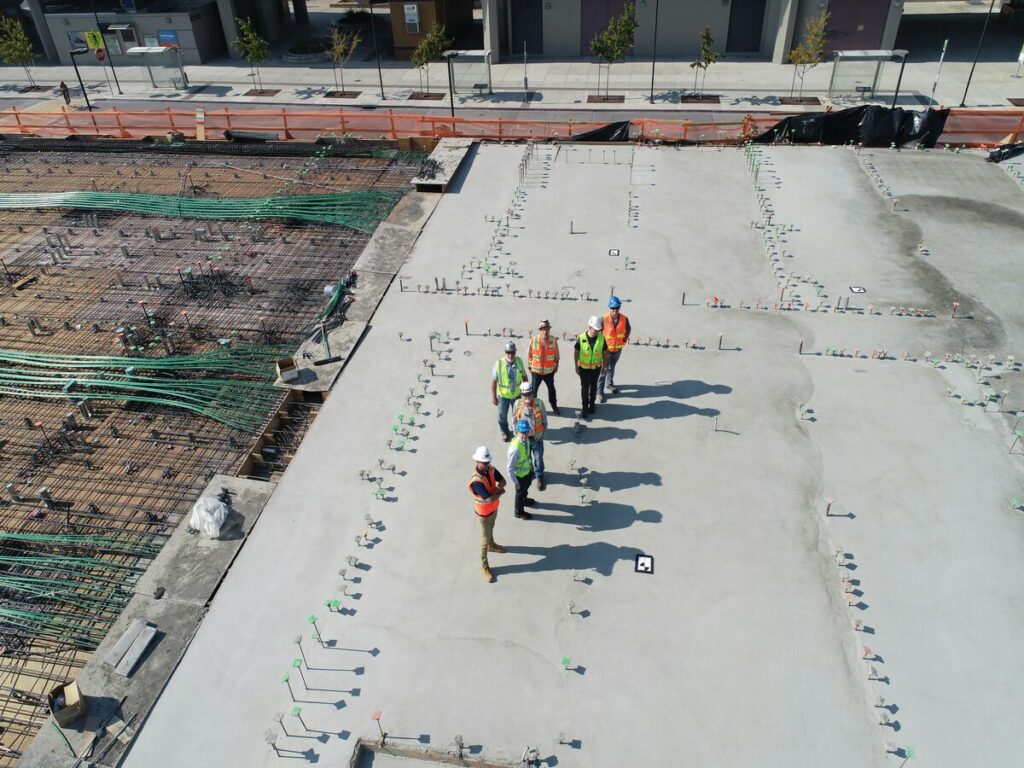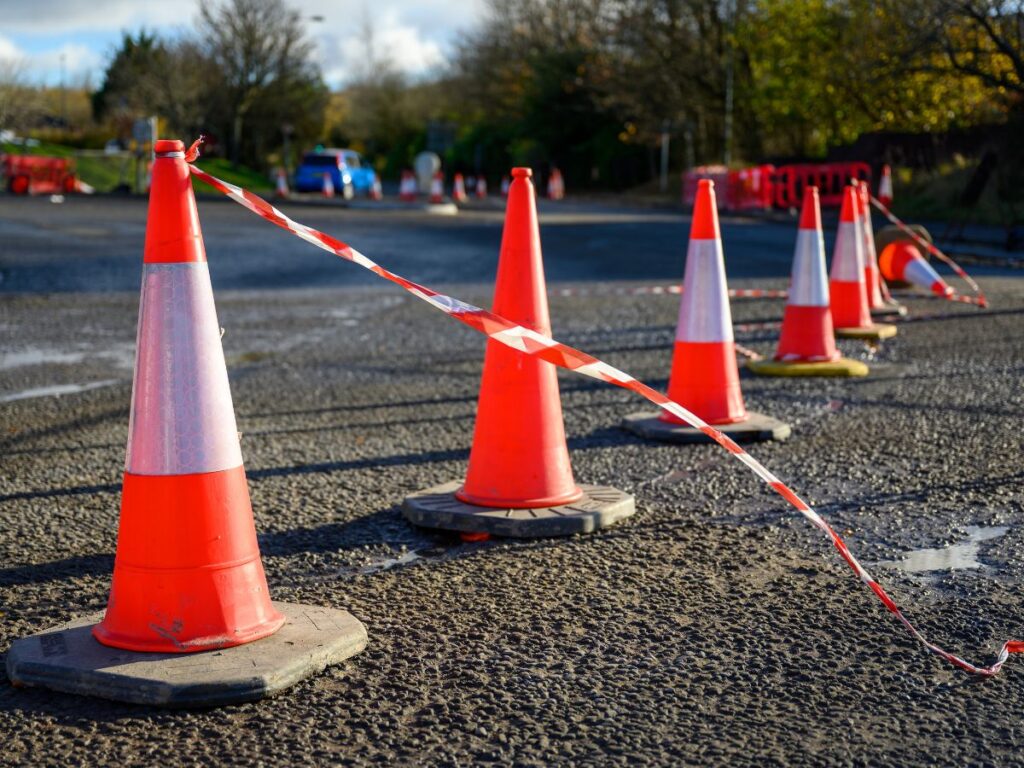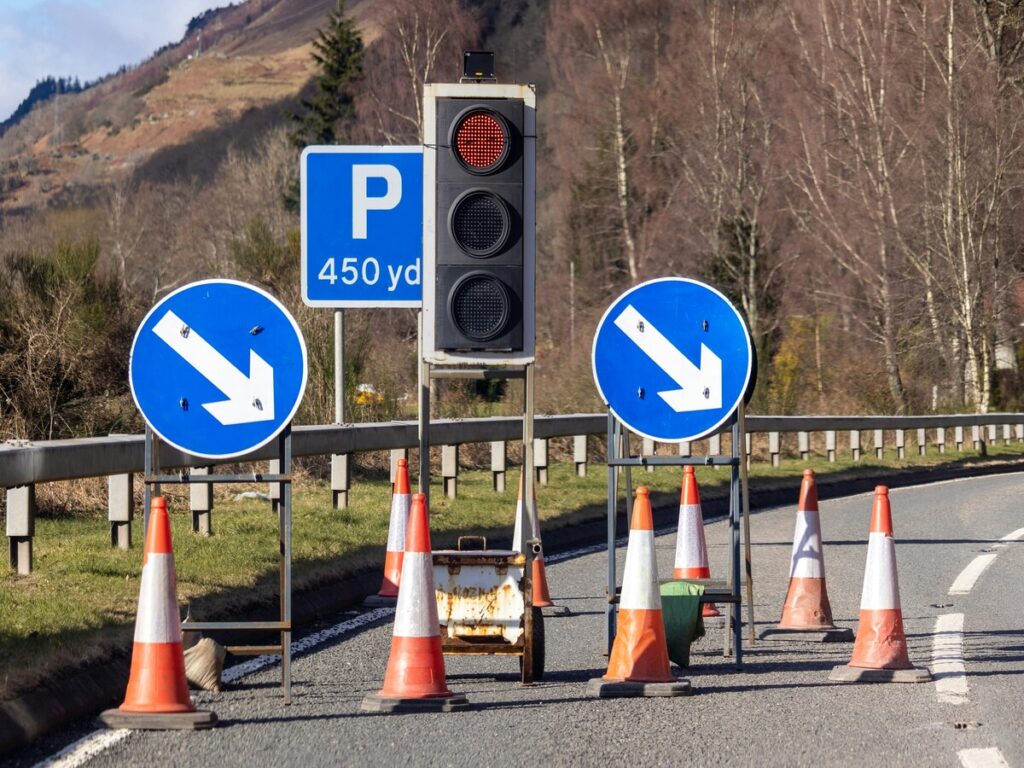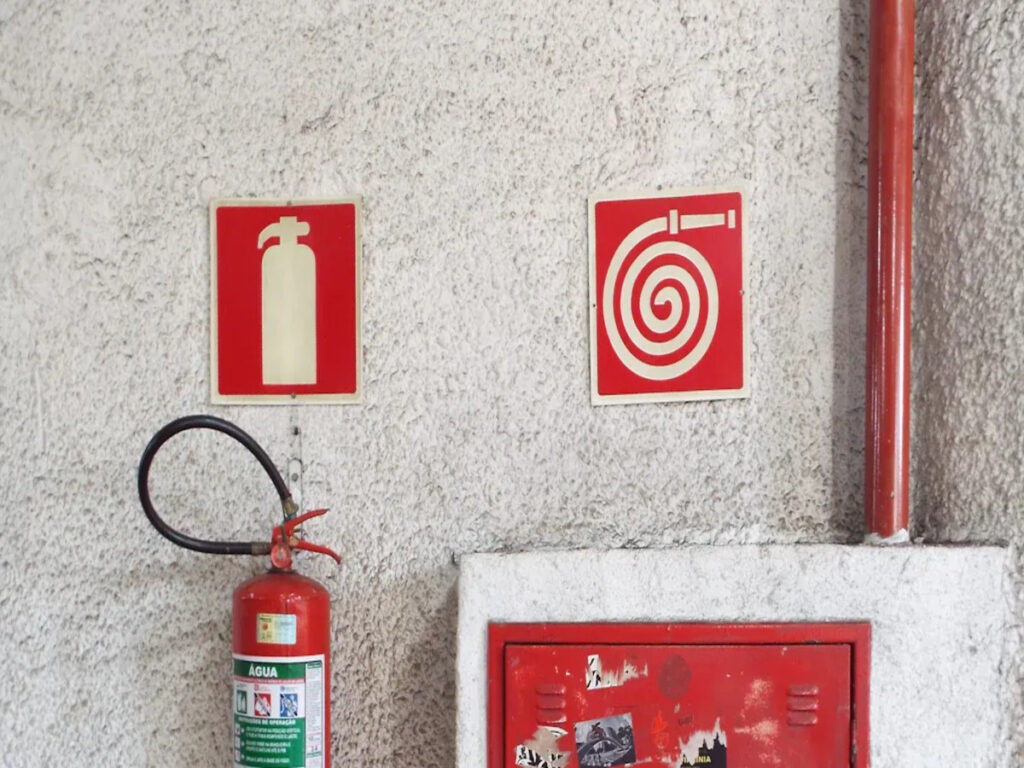
Tunnel construction presents unique challenges that demand effective safety measures. Workers face risks like silica dust exposure from drilling and concrete cutting. Poor ventilation worsens these conditions, increasing health hazards. You can reduce these risks by using plastic road cones to create clear boundaries and guide movement. These plastic road cones enhance visibility in dimly lit environments, ensuring workers and equipment stay within designated zones. Their role in maintaining safety cannot be overstated, as they help prevent accidents and protect workers in high-risk areas.
Overview of U.S. Tunnel Projects and the Necessity of Plastic Road Cones
Key Phases and Challenges in Tunnel Construction
Tunnel construction involves several critical phases, each presenting unique challenges. You begin with planning and design, where engineers assess the project’s feasibility and create detailed blueprints. Site preparation follows, requiring the clearing of land and setting up equipment. Раскопки, one of the most demanding phases, involves digging through soil and rock, often under challenging geological conditions. Structural support and lining ensure the tunnel remains stable, while the installation of systems like lighting and ventilation prepares it for use. Окончательно, testing and commissioning confirm the tunnel’s safety and functionality.
Each phase comes with its own set of challenges. Geological conditions can be unpredictable, making excavation risky. Groundwater management is crucial to prevent flooding. Ventilation systems must address air quality issues, especially in confined spaces. Fire risks and structural stability require constant monitoring. Material handling, including the transport of heavy equipment, adds another layer of complexity. These challenges highlight the importance of robust safety measures throughout the project.
Why Tunnel Projects Need Plastic Road Cones
Plastic road cones play a vital role in addressing these challenges. Their benefits make them indispensable in tunnel construction. Например, reflective cones enhance visibility in low-light environments, ensuring workers and equipment stay within safe zones. Their durable materials withstand impacts and harsh conditions, making them reliable in demanding work zones. These road work cones also comply with safety standards, providing assurance of their effectiveness. In poorly lit areas like tunnels, they serve as clear visual markers, guiding traffic and delineating safe zones for workers.
By using plastic road cones, you create a safer work zone. They help prevent accidents by clearly marking hazardous areas and guiding movement. Their bright colors and reflective surfaces act as signs, ensuring everyone on-site can easily identify boundaries. Whether managing traffic flow or protecting workers, these road work cones are essential tools for maintaining safety in tunnel projects.
Опеткирует дорожные конусы are a great choice for tunnel construction projects. Known for their high durability and reflective properties, ОПТзнаки traffic cones are specifically designed to enhance visibility and safety in even the most challenging tunnel environments. Their robust construction ensures long-lasting performance, making them a reliable safety solution for both workers and drivers.
The Role of Plastic Road Cones in Worker Safety in U.S. Туннельные Проекты

Повышение безопасности работников
Plastic road cones have proven their value in high-profile projects like the Бостон Большой Комп и Вашингтон, округ Колумбия. Расширение метро. In these projects, road work cones served as essential tools for utility worker safety. They created clear boundaries, reducing the risk of injury by keeping workers and equipment within designated zones. Их отражающие поверхности улучшают видимость., even in poorly lit environments, ensuring workers could easily identify safe areas.
In the Boston Big Dig, road work cones guided traffic through complex detours, minimizing accidents and protecting workers from moving vehicles. Сходным образом, Во время Вашингтона, округ Колумбия. Расширение метро, road work cones acted as visual signs, alerting drivers to lane closures and reduced speed zones. These applications highlight how road work cones not only protect workers but also improve overall work zone safety.
Addressing Work Zone Safety Challenges
Plastic road cones address several critical challenges in tunnel construction. They delineate work zones, preventing accidents by clearly marking hazardous areas. Their proper placement ensures drivers receive adequate warnings about changes in road conditions, such as lane closures or reduced speed zones. This allows drivers to adjust their speed and direction, снижение рисков столкновения.
These road safety cones also guide traffic effectively, helping to manage vehicle flow in confined spaces. They serve as barriers, separating workers from moving vehicles and machinery. By complying with visibility and spacing guidelines, road safety cones ensure work zones meet safety standards. Their role as a warning system makes them indispensable in mitigating hazards in tunnel projects.
Соответствие стандартам и правилам безопасности
The use of plastic road cones in tunnel projects aligns with key safety standards and regulations. The Руководство по однородным устройствам управления движением (Mutcd) outlines guidelines for their placement and visibility. Кроме того, а Стандартная спецификация ASTM for Retroreflective Sheeting ensures road safety cones meet durability and reflectivity requirements.
Придерживаясь этих стандартов, road safety cones enhance safety for both workers and drivers. They act as reliable barriers, guiding traffic and delineating safe zones. Following these procedures ensures your project complies with regulations, reducing the likelihood of accidents and improving overall utility worker safety.
Applications of Plastic Road Cones in U.S. Tunnel Construction

Managing Traffic Flow in Tunnel Work Zones
Managing traffic in tunnel work zones requires careful planning and effective tools. Plastic road cones play a crucial role in maintaining smooth traffic flow during construction. You can use them to minimize disturbances and ensure vehicles move efficiently through or around the work zone. Их яркие цвета и отражающие поверхности делают их хорошо заметными., even in dimly lit tunnels. This visibility helps drivers identify construction areas and adjust their speed or direction accordingly.
In projects like the Boston Big Dig and San Francisco Bay Area tunnels, road construction cones served as essential tools for guiding vehicles. They delineated construction zones, creating clear physical and visual barriers that protected workers from moving traffic. These road construction cones also redirected vehicles safely, снижение риска несчастных случаев. By following safety procedures and placing road construction cones strategically, you can enhance utility worker safety and ensure compliance with regulations.
Delineating Safe Zones for Workers
Creating safe zones for workers is vital in tunnel construction. Plastic road cones help you achieve this by clearly marking areas where workers can operate without interference. Во время Вашингтон, округ Колумбия. Расширение метро, reflective road cones were used to separate pedestrian and vehicle zones. This separation reduced the likelihood of injury by keeping workers away from moving machinery and vehicles.
Cones act as visual signs, alerting workers and drivers to potential hazards. Their placement ensures everyone on-site understands the boundaries of safe zones. By using reflective road cones to delineate these areas, you can prevent accidents and maintain a safer work environment. This simple yet effective tool supports your efforts to implement robust safety procedures.
Emergency Use of Plastic Road Cones in Hazardous Situations
Emergencies in tunnel construction demand quick action and reliable tools. Plastic road cones prove invaluable in such situations. You can use them to mark hazardous areas, guide traffic away from danger, or create temporary barriers. Their portability allows you to deploy them rapidly, ensuring immediate response to unexpected events.
В реальных сценариях, reflective road cones have been used to manage traffic during equipment failures or structural issues. They help you redirect vehicles and protect workers from potential injury. Их отражающие поверхности обеспечивают видимость, даже в условиях низкой освещенности, making them effective in emergencies. By incorporating reflective road cones into your emergency response plan, you can address hazards promptly and maintain safety on-site.
Benefits of Using Plastic Road Cones in Tunnel Construction
Improving Worker and Driver Safety
Plastic road cones significantly improve safety for both workers and drivers in tunnel construction. В Бостон Большой Комп, these cones played a critical role in guiding traffic through complex detours. They acted as clear signs, helping drivers navigate safely while protecting workers from potential injury. Their reflective surfaces ensured visibility even in dimly lit areas, снижение риска несчастных случаев.
During the Washington D.C. Расширение метро, plastic road cones served as effective barriers between work zones and active traffic lanes. They helped delineate safe zones, ensuring utility worker safety by keeping workers away from moving vehicles. These examples demonstrate how plastic road cones enhance safety by creating clear boundaries and minimizing hazards in high-risk environments.
Cost-Effective Safety Solutions
Plastic road cones offer a cost-effective solution for maintaining safety in tunnel projects. Their lightweight design makes them easy to transport, reducing labor costs during deployment. Вы можете положиться на их долговечность, which minimizes the need for frequent replacements and lowers long-term operational expenses. These construction road cones also adapt to various scenarios, enhancing their overall value as a safety tool.
Reusable plastic barriers complement the cones, providing additional economic benefits. They require less heavy machinery and labor for installation, making them a practical choice for both short-term and long-term projects. By incorporating these tools into your safety procedures, you can achieve effective results while managing costs efficiently.
Опеткирует дорожные конусы further enhance the cost-effectiveness of your safety strategy. Designed for durability and efficiency, OPTsigns road work cones provide an excellent balance of quality and affordability, ensuring long-term value for tunnel construction projects.
Versatility in Various Tunnel Environments
Plastic road cones excel in diverse tunnel environments, making them a versatile safety solution. Their bright colors and reflective materials ensure visibility in low-light conditions, such as underground tunnels. You can use them to guide traffic, Марк опасные районы, or create temporary barriers, depending on the specific needs of your project.
These construction road cones perform well in challenging conditions, including areas with heavy machinery or confined spaces. Their adaptability allows you to address unique safety challenges effectively. Whether you are managing traffic flow or delineating work zones, plastic road cones provide reliable support in maintaining a safe work environment.
Best Practices for Using Plastic Road Cones in Tunnel Projects
Proper Placement for Maximum Visibility
Proper placement of cones ensures worker visibility and enhances safety in tunnel projects. You should follow specific procedures to maximize their effectiveness. Поместите конусы намного впереди рабочей зоны, чтобы дать водителям широкое предупреждение. Use tapering to create a gradual transition from normal traffic flow to the work zone. Establish a buffer zone between the construction road cones and the work area to provide an added layer of safety.
Ensure construction road cones are visible from a distance so drivers have enough time to react. Bright colors like orange or lime green improve visibility during the day, а светоотражающие полосы улучшают видимость в ночное время.. These practices, used in projects like the Boston Big Dig and Washington D.C. Расширение метро, highlight the importance of strategic placement for injury prevention techniques.
Regular Maintenance to Ensure Effectiveness
Regular maintenance of cones is essential to meet state and municipal safety requirements. Damaged or faded cones reduce their effectiveness as traffic control devices. You should inspect cones for road work regularly for wear and tear. Clean them frequently to maintain their visibility. Replace cones that are damaged or have lost their reflective properties.
These maintenance strategies ensure cones for road work remain reliable safety equipment throughout the project. By keeping cones in optimal condition, you enhance worker visibility and utility worker safety, снижение риска несчастных случаев.
Training Workers on Safe and Effective Use
Proper training is critical for workers handling cones in tunnel projects. You should provide safety training that covers the correct placement and spacing of cones for road work. Teach workers how to use cones for road work alongside other traffic control signs and devices. Emphasize the importance of maintaining visibility and adhering to safety procedures.
Training should also include injury prevention techniques and the use of Личное защитное оборудование (Ст). Workers must understand how cones integrate with flaggers and other safety equipment to create a secure work environment. Proper training ensures cones are used effectively, meeting all requirements for safety and compliance.
Traffic cones play a vital role in ensuring safety and efficiency in U.S. Туннельные проекты. You can use them to create clear boundaries, направлять трафик, and protect workers in high-risk environments. Proper placement and regular maintenance keep them effective throughout the project. Training workers on their correct use further enhances safety measures. These steps support accident prevention and compliance with safety standards. Investing in high-quality traffic cones is a straightforward way to improve safety and operational success in tunnel construction.



















